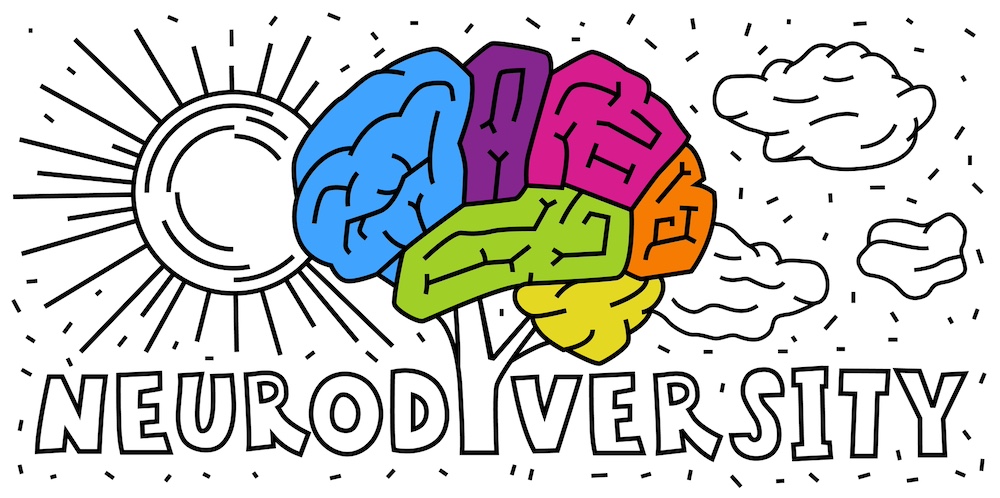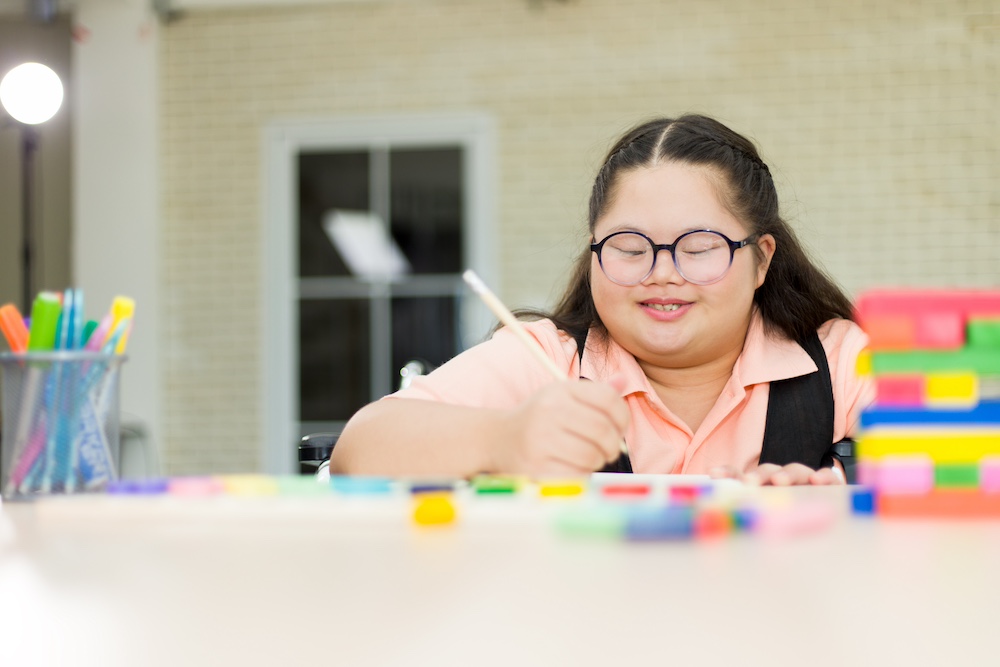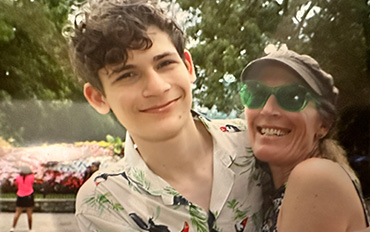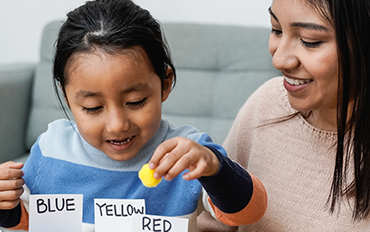Parents of autistic children face numerous stressors that affect various aspects of daily life. The difficulties of raising a child with autism can emerge well before an official diagnosis and persist throughout the family’s life. Specifically, navigating parenthood typically becomes more challenging with a diagnosis of autism due to new emotional challenges, managing behavioral issues, caregiving demands, school-related pressures, financial strain, and lack of adequate support. To meet the demands of raising a child with special needs, parents often shift their focus primarily to their child, which can lead to neglecting their relationship as a couple (Frantz et al., 2018). While prioritizing their child’s needs is often well-intentioned, it can inadvertently increase stress, feelings of hopelessness, and isolation (Chan & Leung, 2020). As a result, couples may struggle to find time for each other, leading to a weakened marital bond.
Couples commonly struggle with isolation while raising a child with autism. One couple we met described feeling self-conscious everywhere they go. They shared, “We’re sensitive to the perceptions, judgments, and critiques from others. We stopped going to certain family functions because we just got tired of explaining autism.”
Another common challenge we have observed has been couples trying to navigate the best way to help their child and set them up for success. For example, one couple contacted Dr. Romney with the hope of helping their 19-year-old son gain skills that would eventually help him meet the goal of independent living. They found a cooking class designed for individuals with special needs. However, after attending, their son felt that the class was intended for people with much higher support needs and did not want to return. While his mom wanted to respect his autonomy, his dad worried that foregoing the class would deprive his son of the opportunity to become more self-sufficient, which was the ultimate goal, even though the skill level was not a perfect match. The couple was stuck between navigating their fears and letting their son make his own decisions.
 These families’ lives are dictated by many different types of treatments, therapies, and opinions (Romney, 2022). Navigating input from multiple therapists and clinicians and trying to listen to their parenting instincts can cause conflict between partners because they feel they are being pulled in competing directions. Part of the difficulty of navigating these decisions is that they present themselves amid stressful family moments, such as a tantrum or meltdown. When tensions are high, it can be easy to lose sight of all parties wanting to accomplish the same goal: doing what is best for their child.
These families’ lives are dictated by many different types of treatments, therapies, and opinions (Romney, 2022). Navigating input from multiple therapists and clinicians and trying to listen to their parenting instincts can cause conflict between partners because they feel they are being pulled in competing directions. Part of the difficulty of navigating these decisions is that they present themselves amid stressful family moments, such as a tantrum or meltdown. When tensions are high, it can be easy to lose sight of all parties wanting to accomplish the same goal: doing what is best for their child.
Although much of the existing research regarding parenting an autistic child highlights familial and marital struggles (Martin et al., 2019), it is important to emphasize that it can also be meaningful and rewarding (Kuppens & Ceulemans, 2019). Through our research and clinical experiences, we have come to recognize the joy, connection, and meaning that raising an autistic child can bring. Many couples have described ways in which raising their autistic child has brought them closer together. One couple even shared that their family felt closer than ever during one of their child’s many medical trials (Romney, 2022).
While prioritizing their child’s needs is often well-intentioned, it can inadvertently increase stress, feelings of hopelessness, and isolation (Chan & Leung, 2020).
That being said, raising an autistic child is a unique journey, and every couple’s experience is different. Many parents of autistic children have identified their partner as their most valued source of support. However, knowing how to lean on and support one another effectively during intense stress can be difficult. We want to describe our method to help couples learn to support each other.
 At the heart of this theory are four essential pillars: togetherness, adaptability, resilience, and communication. Working in harmony, these pillars shield couples from the ongoing stressors they face. Imagine these pillars as the foundation of a thriving relationship, with communication as the critical bridge that connects and strengthens each one (Romney et al., 2024). This is not a one-way path but a dynamic and evolving process, where each pillar builds upon the others, fortifying the couple’s bond. The result? A relationship that not only survives but flourishes in the face of adversity.
At the heart of this theory are four essential pillars: togetherness, adaptability, resilience, and communication. Working in harmony, these pillars shield couples from the ongoing stressors they face. Imagine these pillars as the foundation of a thriving relationship, with communication as the critical bridge that connects and strengthens each one (Romney et al., 2024). This is not a one-way path but a dynamic and evolving process, where each pillar builds upon the others, fortifying the couple’s bond. The result? A relationship that not only survives but flourishes in the face of adversity.
Togetherness speaks to the couple’s ability to “turn towards” each other while seeking to understand and anticipate their partner’s needs. Adaptability refers to the couple’s ability to make cognitive and relational shifts to explore new perspectives (Johnson & Piercy, 2017). Communication consists of intentional efforts to understand their partner’s world. To demonstrate these pillars, we will share the experience of a couple who came in for therapy with Dr. Romney. The Smiths are an African American couple with two children, the older of the two being diagnosed with autism. They came into the session after a misunderstanding in which Mr. Smith suggested they hire someone to help out around the house. Mrs. Smith became upset and shut down. Mr. Smith did not understand this reaction.

Partners can best support each other when they understand their inner world and needs (Gottman & Gottman, 2015). Using the speaker-listener intervention, we were able to help the husband understand the meaning underlying her reaction. She described, “Being a parent of an autistic child can drain my cup… I can start the day already drained and filter all communication from that drained cup. Somedays, I do not feel I am doing enough as a mom. When he suggested getting help, all I heard was, “I am not enough.” Mr. Smith had not realized how much guilt his wife carried about her parenting. In a future session, Mrs. Smith described that it “has helped so much that he understands that guilt. This has helped him anticipate my needs.” As partners build each other up and understand each other’s worlds, they can help build self-efficacy and more togetherness. Self-efficacy is a contributing factor to the strength and perception of cohesion in the family (Garcia-Lopez et al., 2016).
Togetherness is created when couples experience intimacy, yet couples with autistic children often report struggling to find time to make it a priority (Johnson & Piercy, 2017). To help the Smiths experience more intimacy, we helped them adapt their conceptualization of how intimacy can be achieved. Specifically, there are multiple pathways to achieve closeness and connection (Weeks & Fife, 2014). As the Smiths were able to be more creative in how they approached intimacy and time together, they were excited to share that “doing more together has helped us not feel so alone, and we see the resentment for each other go down.” The impact of togetherness, adaptability, and communication was evident with the Smiths as it brought more empathy and marital satisfaction.
When couples shift their focus to the quality of time spent together rather than quantity, they can engage in more meaningful connections. For example, couples can take five minutes to connect when their child goes to sleep or engages in a preferred activity. They may have a trusted neighbor or family member who can watch their child for a bit so they can step outside and go on a brief walk. “Utilizing a village” creatively can help couples be intentional about fostering more togetherness. Couples who learn to create togetherness and adapt to meet their needs express confidence in the resilience of their relationship and maintain a better outlook about their future (Hock et al., 2012; Ramisch, 2012).

Resilience is another critical step in strengthening the relationship, and an important aspect of resilience is social support. Many couples have described how well-meaning family members or friends can give advice that results in more burden or shame, often leading the couple to isolate or withdraw from social experiences. As couple and family therapists, we can help them interact with a village of autism supporters, such as parent support groups. We can also assist in helping them educate their family on what autism is and how to communicate boundaries and expectations with family and friends. As a systemic therapist, be bold and invite other family members to the session to help the family develop the support systems they need. Including relevant family and friends in enactments during sessions can be extremely beneficial in terms of helping family members practice expressing their needs to others, thus building a stronger and more effective support system (Romney, 2022).
A common phenomenon observed in couples with an autistic child is an overfocus on the unique stressors associated with autism, often leading to the family centralizing their lives around it (Johnson & Piercy, 2017). While Smith and McQuade (2021) argue that therapists should encourage families to decentralize autism, our experience suggests a different approach. Instead of decentralizing, families should recognize autism as part of the family through intentional and systemic efforts. This approach involves using specific pillars to help couples balance their focus, ensuring their child’s needs and the preservation of their intimacy and connection are met. This way, the needs of the autistic child and parents do not need to be sacrificed.
 Instead of being pressured by the stressors of raising autistic children, couples are encouraged to adapt by regularly asking themselves, ‘How can we make this work for our child and us?’ This mindset allows autism to influence their decisions, but only after careful discussion and planning to find accommodations that keep the family together and functioning. Couples can prioritize their child’s needs and relational dynamics through this method.
Instead of being pressured by the stressors of raising autistic children, couples are encouraged to adapt by regularly asking themselves, ‘How can we make this work for our child and us?’ This mindset allows autism to influence their decisions, but only after careful discussion and planning to find accommodations that keep the family together and functioning. Couples can prioritize their child’s needs and relational dynamics through this method.
Through our work, we have heard from numerous couples who have demonstrated how they used these pillars to maintain the functioning of their relationship. While the needs of their autistic child influence their decisions, they proactively discuss and plan for how it will impact their activities, allowing them to find suitable accommodations that keep them united and functioning well. For example, one couple decided to move to the Middle East and lived there for several years. This was a challenging decision, but they carefully considered how autism would impact their plans and how their child with autism would be affected. They shared how they consistently set aside time to check-in. Another couple shared that they planned their vacations in the off-season to enjoy their time together without their child struggling with large crowds and sensory overload.
 Couples who embrace living with autism tend to be more adaptable in making plans that accommodate everyone’s needs. “We have the common bond of autism. This mindset helped families come together and prioritize the unique needs of autism while still considering the needs of all family members (Romney, 2022). The family’s focus may need to remain on autism because its impact is always present and cannot be ignored. For many, this shared focus on autism brought them closer together, strengthening their bonds through mutual understanding and effort.
Couples who embrace living with autism tend to be more adaptable in making plans that accommodate everyone’s needs. “We have the common bond of autism. This mindset helped families come together and prioritize the unique needs of autism while still considering the needs of all family members (Romney, 2022). The family’s focus may need to remain on autism because its impact is always present and cannot be ignored. For many, this shared focus on autism brought them closer together, strengthening their bonds through mutual understanding and effort.
Raising an autistic child presents unique challenges that can significantly impact family dynamics and relationships. The stressors associated with autism often lead parents to prioritize their child’s needs, sometimes at the expense of their relationship. However, our research and clinical experiences demonstrate that these challenges, while substantial, can be managed effectively. By focusing on the four essential pillars—Togetherness, Adaptability, Resilience, and Communication—couples can maintain a strong, supportive partnership while addressing their child’s unique needs.
 The stories of these couples illustrate that embracing these pillars can lead to meaningful connections and shared joy, even amid adversity. By balancing their child’s needs with their relationship dynamics, these couples have learned to adapt, support one another, and thrive. Ultimately, while raising a child with autism can be demanding, it can also be profoundly rewarding. The journey can bring families closer together, fostering a deeper understanding and appreciation for each other.
The stories of these couples illustrate that embracing these pillars can lead to meaningful connections and shared joy, even amid adversity. By balancing their child’s needs with their relationship dynamics, these couples have learned to adapt, support one another, and thrive. Ultimately, while raising a child with autism can be demanding, it can also be profoundly rewarding. The journey can bring families closer together, fostering a deeper understanding and appreciation for each other.
For therapists and practitioners, supporting these dynamics is crucial. By guiding couples to embrace these pillars and providing the necessary tools and support, therapists can help couples build stronger, more resilient relationships that not only endure but flourish, even in the face of the unique challenges presented by autism.
The needs of the autistic child and parents do not need to be sacrificed.

Justin Romney, PhD, LMFT, is an AAMFT Professional member holding the Clinical Fellow and Approved Supervisor designations and is a Clinical Assistant Professor in the Couple and Family Therapy Program at the Kent School of Social Work and Family Science at the University of Louisville.

Allison Montgomery, MSCFT, Marriage & Family Therapist Associate, graduated from the Couple and Family Therapy Program at the Kent School of Social Work and Family Science at the University of Louisville.
Chan, K.K.S. & Leung, D.C.K. (2020). The impact of child autistic symptoms on parental marital relationship: parenting and co-parenting processes as mediating mechanisms. Autism Research, 13(9), 1516-1526. https://doi.org/10.1002/aur.2297
Frantz, R., Hansen, S.G. & Machalicek, W. (2018). Interventions to promote well-being in parents of children with autism: A systematic review. Review Journal of Autism & Developmental Disorders 5, 58-77. https://doi.org/10.1007/s40489-017-0123-3
García-López, C, Sarriá, E., & Pozo, P. (2016). Parental self-efficacy and positive contributions regarding autism spectrum condition: An actor–partner interdependence model. Journal of Autism and Developmental Disorders, 46(7), 2385-2398. https://doi.org/10.1007/s10803-016-2771-z
Gottman, J. S., & Gottman, J. M. (2015). 10 principles for doing effective couples therapy (Norton series on interpersonal neurobiology). WW Norton & Company.
Hock, R. M., Timm, T. M., & Ramisch, J. L. (2012). Parenting children with autism spectrum disorders: A crucible for couple relationships. Child & Family Social Work, 17(4), 406-415. https://doi.org/10.1111/j.1365-2206.2011.00794.x
Johnson, J. & Piercy, F. (2017). Exploring partner intimacy among couples raising children on the autism spectrum: A grounded theory investigation. Journal of Marital and Family Therapy, 43(4), 644–661. https://doi.org.10.1111/jmft.12247
Kuppens, S., & Ceulemans, E. (2019). Parenting styles: A closer look at a well-known concept. Journal of Child and Family Studies, 28, 168-181.
Martin, C. A., Papadopoulos, N., Chellew, T., Rinehart, N. J., & Sciberras, E. (2019). Associations between parenting stress, parent mental health and child sleep problems for children with ADHD and ASD: Systematic review. Research in Developmental Disabilities, 93, 103463. https://doi.org/https://doi.org/10.1016/j.ridd.2019.103463
Ramisch, J. (2012). Marriage and family therapists working with couples who have children with autism. Journal of Marital and Family Therapy, 38(2), 305-316. https://doi.org.10.1111/j.1752- 0606.2010.00210.x.
Romney, J. (2022). The lived experience of functionality in families with a child diagnosed with autism spectrum disorder: An interpretive phenomenological analysis. (Doctoral dissertation, Texas Tech University).
Romney, J. S., Austin, K. L., Fife, S. T., & Montgomery, A. L. (2024). It brought us closer: How couples in the United States with children diagnosed with ASC create and maintain relationship functioning. Journal of Family Therapy, 46(2), 140-158.
Smith, S. L., & McQuade, H. B. (2021). Exploring the health of families with a child with autism. Autism, 25(5), 1203-1215. https:/doi.org/10.1177/1362361320986354.
Other articles
Embracing New Territories: The Journey of Emotionally Focused Therapy (EFT) in Kenya
It is well-documented that satisfactory intimate relationships are essential to human health; they serve as vital resources that enhance the general resilience of people and their ability to navigate physical and emotional challenges. Conversely, distressed, or unsatisfactory intimate relationships strain both psychological and physical health and are sources of severe psychological distress.
Michelle Karume, DMFT, Ronald Asiimwe, PhD, Rehema Nyambura Gathumbi, MFT, & Mark Maxwell, PsyD
Overcoming Challenges & Enhancing Care for Neurodiverse Families: A Guide for Marriage and Family Therapists
Autism Spectrum Disorder (ASD) is a multifaceted neurodevelopmental condition that affects a child’s social interactions, communication skills, and behavior. Its complexity is reflected in the wide range of symptoms and severity levels it encompasses. Recent statistics show a significant increase in ASD prevalence, with approximately 1 in every 36 children in the U.S. now diagnosed with the disorder (Maenner et al., 2023). The higher prevalence in boys compared to girls—about four times more frequently diagnosed (Maenner et al., 2023)—places an increasing demand on therapists and support systems to address the needs of these families effectively.
Chrystal N. McDowell, PhD
The Integration of Play Therapy for Children Diagnosed with an Intellectual or Developmental Disability
Carlos, a six-year-old Hispanic American diagnosed with Autism Spectrum Disorder (ASD), is primarily non-verbal. At the age of two, he was removed from his home due to abuse and neglect linked to his biological parents’ substance use. Carlos and his four siblings, all diagnosed with varying levels of intellectual and developmental disabilities (IDD), suffered from severe neglect, often being locked in a bedroom. In one such instance, Carlos’s brother fell out of a window in an attempt to escape, resulting in severe injury.
Trent Call, PhD



